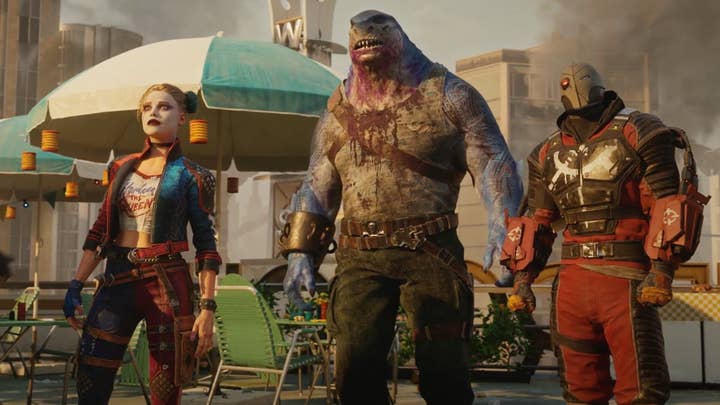Sony steers clear of Free-to-Play as its live service strategy evolves | Opinion
Sony made a significant move by highlighting the hero shooter Concord extensively during its recent State of Play event. This move underscores the company's growing focus on live service games. While high-quality single-player games remain key to PlayStation's identity, they are now sharing the spotlight with Sony's live service offerings.
Interestingly, a notable announcement regarding Concord was downplayed by Sony. Unlike many live service games, Concord won't be free-to-play. Following the model of Helldivers 2, Concord will be priced at $40 at launch. This pricing approach for both a co-operative PvE game like Helldivers 2 and a PvP-focused game like Concord indicates a deliberate strategy by Sony.
However, this information about Concord's pricing was quietly listed on the PlayStation Store, missing a key opportunity to inform the audience during the event. Announcing that future maps, characters, and story elements would be free could have positively influenced the game's reception.
If this pricing model is becoming Sony's standard for live service games, it presents a unique approach. While there may be flexibility for some titles to adopt different monetization strategies, Sony appears committed to an upfront payment model for now, albeit at a competitive price point.
Sony is forgoing the free-to-play approach, betting that an upfront cost will create a more sustainable live service business in the long run.
This decision contradicts the common industry belief that making the game client free to download is essential for attracting the maximum number of players, who can then be converted into paying customers. Sony's approach could shape the type of live service games it launches moving forward.
Helldivers 2 supports Sony's strategy. The game, which launched with an upfront cost, has become the fastest-selling PlayStation title to date, proving a successful counterpoint to failures like Warner Bros.' Suicide Squad: Kill The Justice League, which struggled despite its full price, resulting in a significant financial loss for the publisher.
While Suicide Squad faced issues beyond its pricing model, the history of premium-priced live service games with disappointing outcomes, such as Anthem and Marvel's Avengers, raises valid concerns. The list of similar failures, including Skull & Bones and Foamstars, is extensive.
Free-to-play model failures exist too, but requiring players to pay upfront imposes higher initial barriers. Yet, Helldivers 2's success demonstrates that this model can still work.

The advantages of the free-to-play model, like attracting a wider audience and creating a dynamic gameplay experience due to a larger player base, cannot be overlooked. Removing the upfront cost can also prevent growth plateaus, as engagement won't be limited by the initial financial barrier.
This model facilitates cross-platform play, allowing players to access their content on multiple devices without additional costs, further enhancing the game's appeal.
Competing against established free-to-play titles can be challenging, as players might be less willing to pay for a service others offer for free. This competition drove Blizzard to transition Overwatch to an F2P model, recognizing the difficulty of competing against free giants in the same genre.
However, the transition of Overwatch to free-to-play faced backlash, highlighting the different player expectations between paid and free titles. The aggressive monetization strategies of Overwatch 2, although common in F2P models, were ill-received by its player base, forcing Blizzard to retract several changes.
The impact of the decision to charge upfront is profound, influencing game design and player engagement deeply.
This highlights the complexity of balancing monetization strategies with player satisfaction in live service games.
Sony is navigating the intricate terrain of post-launch monetization for its live service games with considerable caution. Players who have invested upfront in a game tend to have different expectations regarding monetization compared to those who downloaded a free version.
One might wonder why Sony isn't fully committing to a free-to-play (F2P) model. It could be assumed that Sony's adherence to a paid model reflects its traditional stance on game software business models and hesitancy to transition entirely to F2P. This apprehension is something seen in publishers that are reluctant to 'give away' products costing tens of millions to develop or to accept the F2P model's structure, where a significant portion of users do not make purchases.
However, Sony's strategy does not align entirely with this perspective. Despite being relatively new to F2P, Sony observes the substantial revenue generated by Hoyoverse on PlayStation, recognizing the mechanics and demands of F2P but opting not to fully adopt this approach.
There are three primary reasons why Sony might prefer an upfront payment model for its live service games. Firstly, charging for the game reduces the churn rate and provides developers with more stability during the initial stages. Many F2P games lose a large number of players quickly as they move on to newer games without making any purchases.
By implementing a payment barrier, Sony sacrifices potential players who may not be financially significant but secures a more dedicated player base. These invested players are likely to remain engaged to justify their expenditure, providing a longer-term audience who are less prone to leaving at the first challenge.
Sony appears to have identified the $40 price point as a balanced approach, though it still faces challenges in capturing a more casual audience. Recently, Helldivers 2 has encountered such difficulties.

Secondly, a price barrier can positively impact the community around the game, as efforts to mitigate abusive behavior become more effective. Banning a player from a paid game carries financial consequences, unlike in F2P games where it is easier to rejoin by creating a new account.
This concern is more significant for Sony than for most live service operators because, as a platform holder, it must maintain a responsible stance on player behavior and safeguard the PlayStation brand's reputation. Although this is not the sole reason for Sony's stance, it is undoubtedly a contributing factor.
Lastly, there is the PlayStation Plus (PS Plus) dimension. Sony has a unique tool at its disposal that distinguishes it from other live service game operators. It doesn't need to overhaul its business model to make games F2P because the PS Plus subscription allows games to be free for a period, attracting new players without the F2P stigma. This strategy, however, only applies to the PS5 platform, and a different approach may be necessary for PC launches.
Sony has observed the success of Hoyoverse on PlayStation and understands F2P, yet has chosen not to follow this path.
In conclusion, Sony's decision to avoid a F2P model upfront may complicate its path but is likely aimed at building a more sustainable live service business over time.
Questions remain about consumers' capacity for an ever-increasing number of live service games and how many such games the market can support simultaneously. Nevertheless, Sony's business model choice could be a calculated strategy rather than sheer folly.